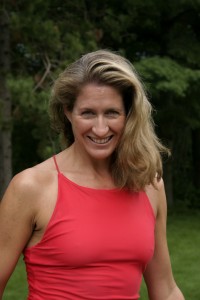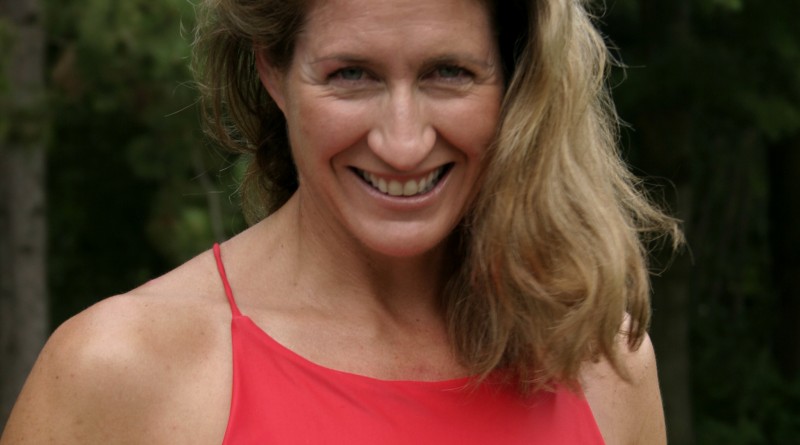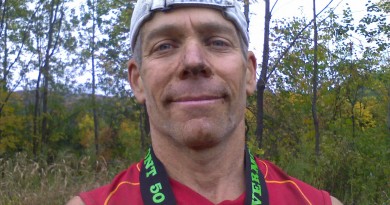Charlotte Brynn | Reader Athlete July 2011

Charlotte Brynn
Age: 45
Residence: Stowe
Family: Husband, Jeff Brynn; son, Soeren, 13; daughter, Heidi, 11
Occupation: Executive Director of the Swimming Hole
Primary sport: Swimming
VS: Tell me about your plans to swim the English Channel next year.
CB: In 2010, I began to research making an attempt at the Channel. You have to book at least two years in advance to get a pilot who works in conjunction with the English Channel Swimming Association. I have a booking for the neap tide [a tide that occurs when the difference between high and low tide is least] from Aug. 8 to 16 in 2012. The swim season for the English Channel is June to September/October, and within that time frame, you have to choose your tide window. Most swimmers book on the neap tide because there is less movement in the water, and less chance of being pushed off course. The current is such that the slower swimmers actually swim an S curve. The direct course is 21 miles, but last year one woman swam a total of 64 miles and needed almost 29 hours to do it because of the current. Among the problems you can encounter are hypothermia, dehydration, and kidney failure. I have a great crew, which includes my husband, my sister Robbin Hepburn, Deborah Beier, Cara Hancy, and Paula Yankauskas.
VS: In March you swam to Alcatraz. What was that like?
CB: I was heading to San Francisco for a conference and found an expedition swim with nine other swimmers, which took place early in the morning before the conference. There were storm warnings that day, and it was windy and raining with a water temperature of 53. On the boat leaving Aquatic Park, things just got rougher. It was a week after the tsunami in Japan, and it suddenly hit me that I couldn’t take the boat back from Alcatraz; I’d have to swim. Once I hit the water, the only thing on my mind was getting back to Aquatic Park as quickly as I could, but the swim was exciting and exhilarating. I thought the cold water would be an issue but that was at the bottom of the list with all the sea lions and other creatures. I just kicked into overdrive. All kinds of things latched on to me. I thought I’d spit up a flounder after I finished.
VS: Tell us about some other memorable swims.
CB: One of my memorable swims was in 2006 when I first began exploring open-water swimming. I crossed Lake Champlain from Willsboro, N.Y., to Oakledge Park on a very stormy morning. The distance is 16 miles, and I didn’t know what I would feel like after four, or whether I could do more than eight. I like destination swimming, from one point to another, because you jump in, set a pace, and eventually start seeing landmarks. This summer I plan a two-way crossing from Burlington to Willsboro and back. I’m the only person swimming the entire length, and I’ll be accompanied by a boat, and with a relay of other swimmers beside me taking turns swimming.
VS: What are your favorite places to swim in Vermont?
CB: I adore Green River Reservoir. They don’t allow motorized boats and that makes you feel more secure. There is beautiful scenery. Last summer the loons got quite used to me. Often I’d turn to breathe and see one next to me. Then it would dive and swim underneath me. It was wonderful that they could accept me in their environment.
VS: What’s the coldest water you’ve ever swum in?
CB: The coldest water to date is 47.5 in November last year. Part of my training is not just distance but acclimatizing to the cold. By the end of the fall, I was able to swim 30 to 45 minutes in 50- to 52-degree water and feel OK, almost comfortable in spots.
VS: How are you training for the Channel?
CB: I train 20 hours a week, which includes 15 hours of swimming. I take two yoga classes and do one session at home, and have two to three sessions of strength training to reduce the risk of shoulder pain. For fun, I love to run and hike. In the summer, I often run up the Pinnacle once or twice a week and then walk down, timing myself to see how fast I can go. I also like to play tennis.
VS: What do you eat and drink during long swims?
CB: I’m partial to a carbohydrate and water mix called Maxim. For recovery, I drink a mixture of Gatorade and organic whey protein. On long swims, I like to eat every 30 minutes for one minute or less. Those minutes can add up, particularly when you factor in the tide and current, so I’ve been practicing getting the food down as fast as I can. I’m lucky to be able to keep solid food down when I swim. I eat little tubes of peanut butter and mini cube sandwiches, but I’m experimenting with things like chicken broth puree, ginger nut cookies, peach slivers, and cubes of chocolate. Anything that stays down is good.
VS: What do love about distance swimming?
CB: I love being in the water and enjoying the surroundings and scenery. I also like the commitment and having to be patient. It’s a great feeling when you’ve completed an event, but it’s also a great feeling to know that you’re prepared for something, whether it’s Lake Champlain or your first open-water swim in a pond. I also like the extreme variables involved. The water can be so super challenging so that you have to fight your way through, or it can be smooth as silk. It’s never the same. Plus, you can never guarantee the outcome based on previous swims. I’m attracted to the uncertainty of the wind, waves, and current. You’re always on the edge of your seat. It’s not a virtual experience; you’re living it for yourself, feeling it and tasting it.
—Phyl Newbeck


